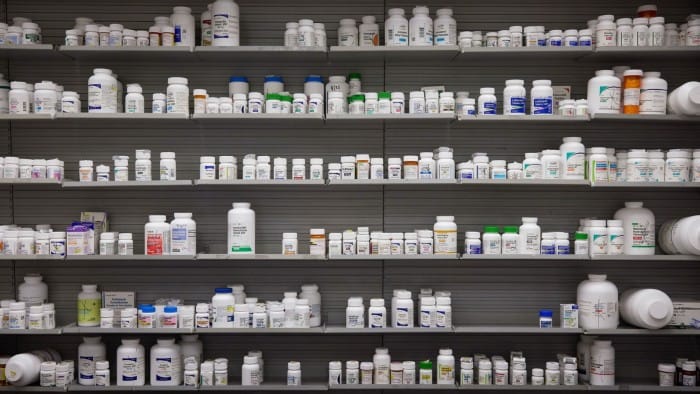Unlock the White Home Watch e-newsletter at no cost
Your information to what Trump’s second time period means for Washington, enterprise and the world
Traders shrugged off US President Donald Trump’s risk to impose a 200 per cent tariff on prescription drugs, betting that the levy is unlikely to be applied.
Shares in most large European drugmakers traded down on Wednesday however then recovered, with many buying and selling flat or barely up. Shareholders in India’s large drugmaking trade, which provides the US with about 40 per cent of generic medication, additionally largely glossed over the risk. The S&P BSE Healthcare index, which tracks Indian pharma shares, was little modified on the shut of buying and selling on Wednesday.
Emily Subject, an analyst at Barclays, mentioned buyers had been disregarding the most recent pharma tariff risk and dismissing it as “rhetoric”.
“Nobody is taking it critically,” she mentioned. “The concept of the Taco commerce [Trump always chickens out] nonetheless prevails.”
The 200 per cent tariff “seems to be impractical” and “extremely inflationary”, mentioned a Mumbai-based pharma trade analyst. “I don’t assume too many individuals have taken [it] very critically.”
The US was the vacation spot for nearly a 3rd of India’s almost $30bn of pharma exports within the monetary 12 months ending in March, in line with Indian authorities knowledge.
Subject mentioned the dearth of market response was maybe a sign of optimism about progress in negotiations over drug pricing within the US.
The administration has to this point held off imposing tariffs on the sector. However Trump has repeatedly threatened to take action, and the US commerce division has performed a probe of the nationwide safety implications of counting on international manufacturing of medicines, which may result in tariffs on abroad producers.
The administration has additionally proposed a probably radical overhaul of drug pricing, together with the adoption of so-called most favoured nation pricing. This might require drugmakers to promote on the decrease costs that they provide to comparable developed nations.
Alongside the 200 per cent risk, Trump additionally mentioned on Tuesday that he would give pharma firms a 12 months or a 12 months and a half to carry manufacturing again to the US, earlier than “very excessive charge” tariffs had been imposed.
Many US and European drugmakers have introduced giant funding plans for the US to attempt to please the administration and counter the specter of tariffs.
However Matt Weston, a pharma analyst at UBS, mentioned 18 months wouldn’t be lengthy sufficient to maneuver manufacturing to the US, given the time it took to safe regulatory approval and construct high-tech manufacturing vegetation.
“We might often consider 4 to 5 years because the timeline to maneuver commercial-scale manufacturing to a brand new website,” he mentioned.
Weston mentioned the businesses most affected could be those who imported completed, high-priced items into the US, however he added that this was not typically what European pharma firms did. Many have at the very least the ultimate stage of producing within the US.
Analysts at funding administration group Capstone mentioned that if tariffs had been applied at this degree, it might have a big impression on US sufferers. “If 200 per cent pharmaceutical tariffs had been enacted, the US will face drug shortages as branded producers encounter elevated prices for part imports, and generic producers in the end elect to exit the US market to guard already razor-thin margins,” they mentioned.
However additionally they mentioned that they seen the risk as a part of Trump’s negotiating technique, both on home drug pricing coverage or because the US negotiated commerce agreements with different nations.
Earlier this week, Trump mentioned that Washington was near reaching an interim commerce take care of India, however added that the nation could be hit with an extra 10 per cent tariff as a part of the Brics bloc of countries.
Each India and the US have mentioned they are going to look to complete the primary tranche of a full deal by autumn. India faces as much as 26 per cent tariffs on exports to the US.

